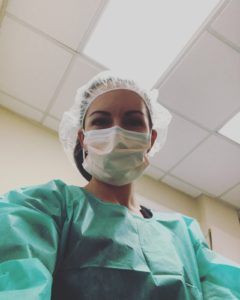DIY braces are so much CHEAPER! Why should I pay a dentist to do my teeth?
Even if finances are no issue, there’s something about getting a good deal. With so many companies, making aligner trays, it may seem like you can straighten your own teeth at home. And, honestly, you can. But it’s not without some hefty risks.
As with any doctor, the fee is really for their expert opinion, diagnosis, and monitoring of the treatment. You could go to Sephora for that misshapen dark spot that appeared on your face, but chances are most of you would seek out a dermatologist.
Same goes for straightening your teeth! You could take your own impressions and send them in to a company, and do it yourself. Your teeth will probably move. You may have no issues. What you’re skipping over is the expert opinion and diagnosis part. If you have aligners made by a dentist or orthodontist, they’ll examine you for problems that could make moving your teeth a little more difficult, or possibly very risky.
Your gums will be checked for periodontal disease. When the gums and bones are in a state of active infection, they are not good candidates for moving the teeth. Moving the teeth anyway could lead to tooth loss.
X-rays will be taken and examined to be sure your teeth and the bone around it are healthy. When teeth are being straightened, they are actively being moved through the bone. Think of it like pulling a stick through wet concrete. The tooth is pushed through the bone in front, and the bone fills in behind. It’s a very simple process, however it requires observation. If a tooth is pushed with too much force, the root can be eaten away; if it’s not pushed with enough force, it won’t move. Plus, some people have short roots on their teeth (root resorption) from previous trauma, or genetics, and if these teeth are moved, they can become loose and be lost. This is why it is so important to have a dentist check your x-rays before any teeth are moved.
Also, the gums and jawbone can have deficiencies- if a tooth is moved out of the bone, it becomes loose and is usually lost. A dentist or orthodontist uses x-rays to check for these deficiencies and anticipate working around them. They know that a tooth cannot be moved past a certain point, and avoid moving the tooth through the edge of the bone (and losing your tooth!).
This scenario of losing a tooth or two is worst-case. Most likely, the DIY treatment simply won’t work all that well. Dr. Alexandra Best, sees this all the time practicing in Charlotte, NC- “I’ve seen many patients come into our office asking me to “fix” what Smile Direct Club did to their teeth. Issues ranged from bites that were messed up, gum recession, loose teeth, teeth that were still crooked after treatment, and teeth that relapsed (became crooked again) as soon as they finished their aligners. There’s a lot more involved than just taking some impressions.”
As with any medical treatment, there are risks. I’m sure all of these DIY braces companies have tried to anticipate these. Patients these days are more informed than ever. With so many of you reading up on treatment options, it’s becoming even more important for doctors to spend the time to teach you about your treatment so you can make these informed decisions. When you explore the cost of DIY braces versus going to a professional, keep these risks in mind and go forward with eyes wide open!


